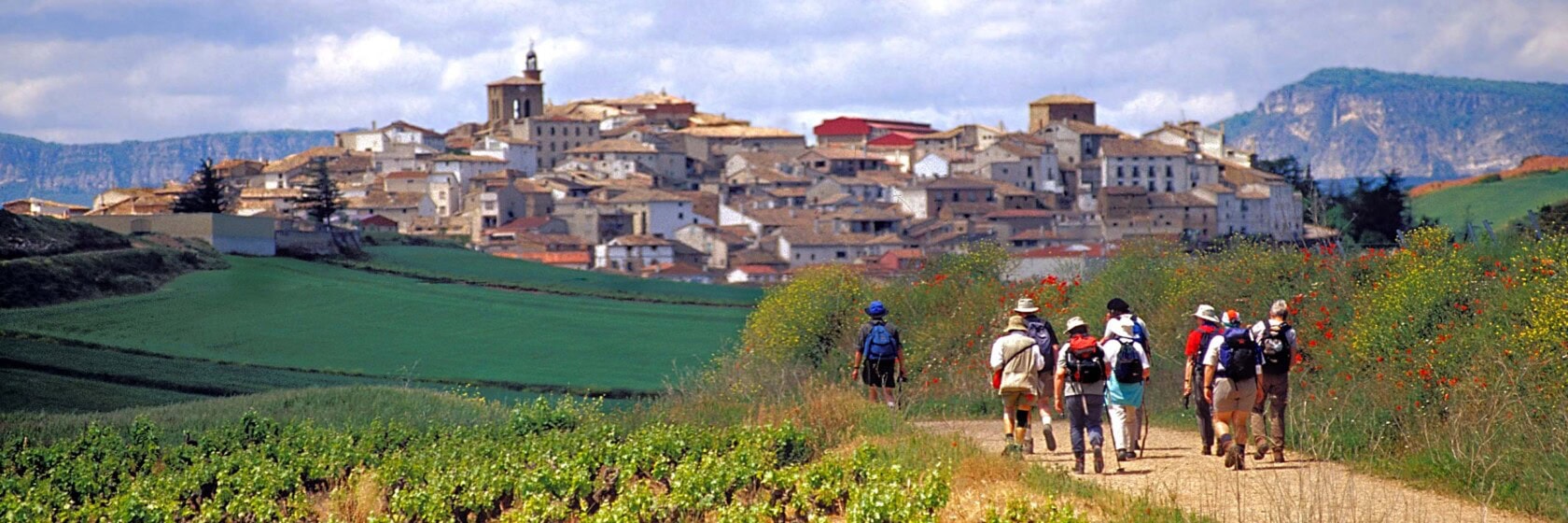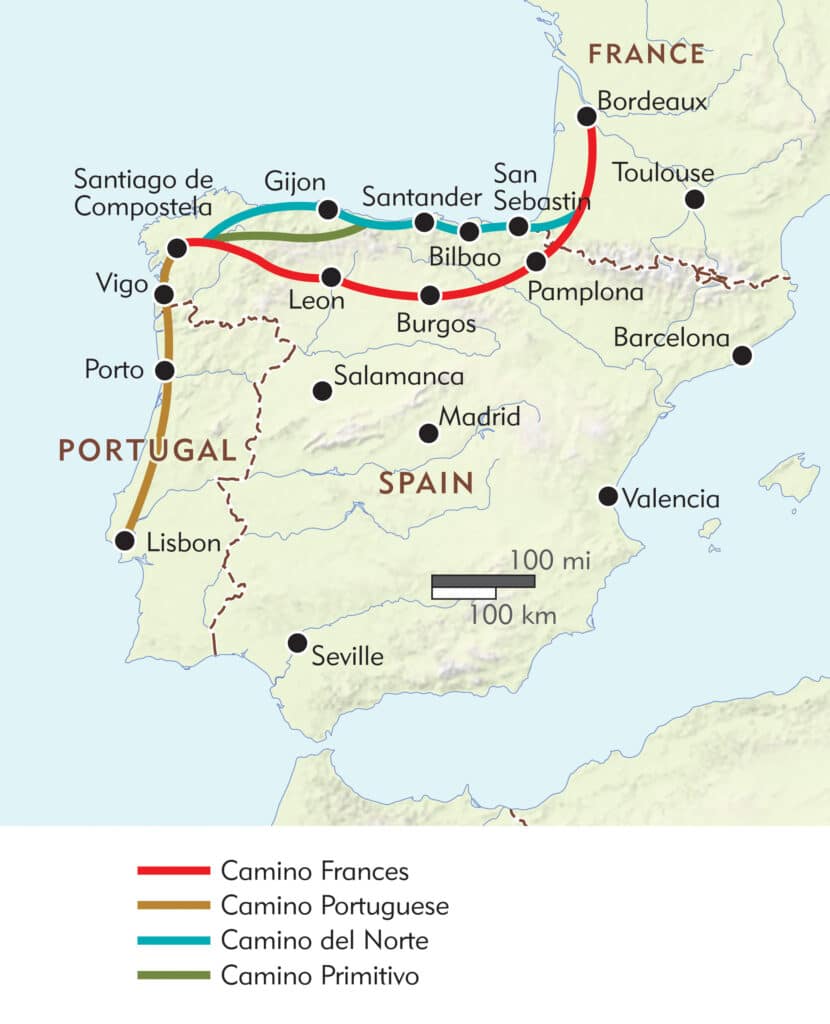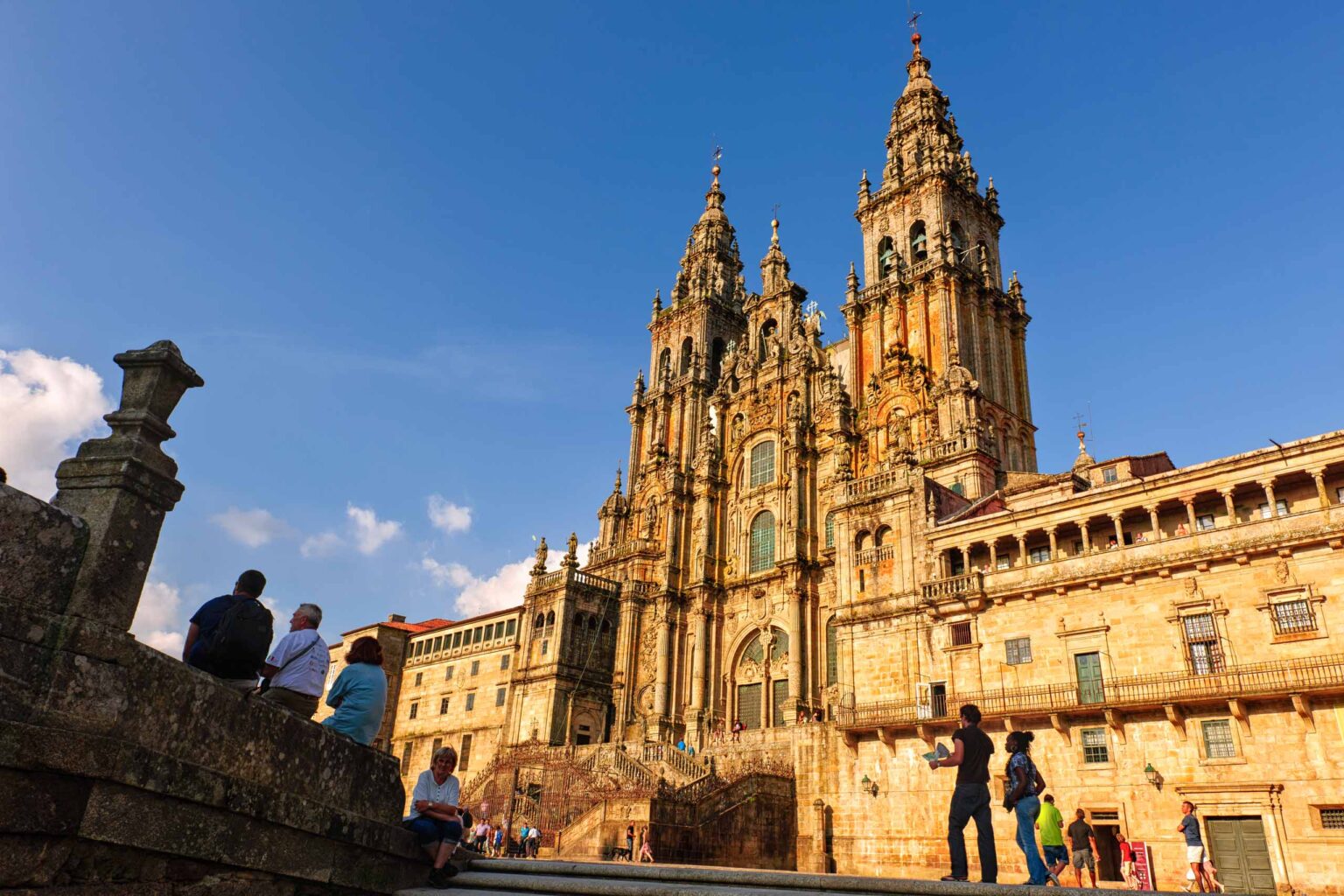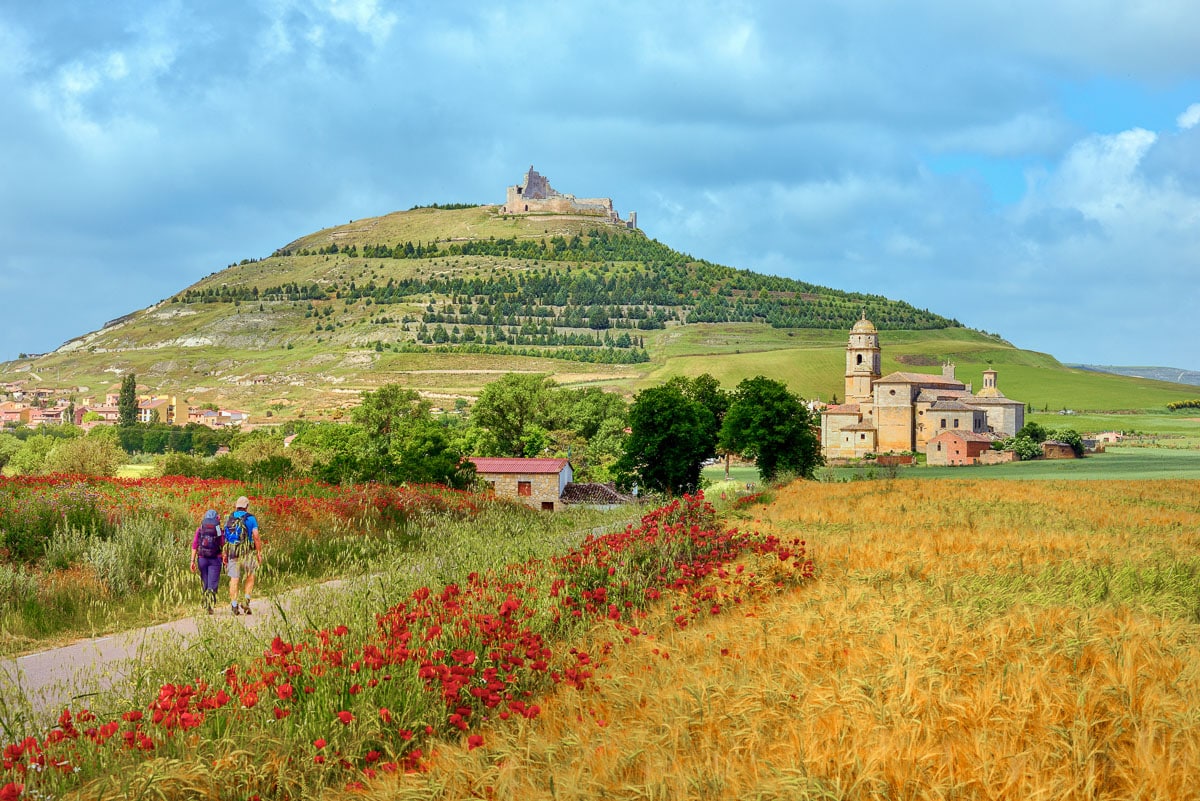
Spain
The Many Camino de Santiago Routes – Which is Best for You?
The Many Ways to Santiago

For thousands of years, pilgrims have made the journey on foot to the sacred Cathedral of St. James in Santiago de Compostela via numerous trails coming from all over Europe and even as far away as Jerusalem. Once they reach Spain and Portugal, most pilgrims funnel into a few main trails, with the classic “Camino Frances” (French Way) being the most popular. This is the route that we have chosen, selecting the most beautiful hiking sections for our journey.
The Camino Frances
- This was the principal traditional route and thus has the most impressive churches and other significant pilgrimage stops along the route.
- The scenery is exquisite, with a great variety of landscapes as we traverse historic regions of northern Spain, from the high plains of Castile to mystical Galicia.
- The hiking is over easy to moderate terrain, with well-marked paths throughout.
- There are more pilgrims here than on other routes, and this is what you want! One of the highlights of the Camino is the camaraderie, the sense of walking in the footsteps of history, and for many, the sense of a shared spiritual journey.
- This route has the best selection of accommodations, including historic monasteries and inns. In Santiago, we will have two nights in the exquisite Parador de Santiago de Compostela, founded in 1499. From its terrace looking right over the square in front of the Cathedral, we’ll witness countless pilgrims reaching the emotional conclusion to their journey.
- There are great options for dining along this route. We share a wonderful array of Spanish cuisine (and wine!), including renowned Galician seafood with you.
What about other Camino options?
Camino Portugues
This is the second most popular route, which gained prominence in the 14th and 15th century as coastal towns grew in wealth from the sailing expeditions to Africa and the New World. The Camino Portugues starts in Lisbon or Porto and has two variations, one following the coast and the other heading inland. Many churches, chapels, and monasteries dedicated to St. James dot the inland route. Unfortunately, this route generally follows, or is not very far from the highway routes up the coast, and much of the traditional path now goes through highly urbanized areas.
Camino Del Norte
Also known as “The Coastal Route,” this option travels along the northern coast of Spain past Bilbao, Santander, and Gijon before turning southwest at Ribadeo. This route does enjoy scenic coastal and mountainous sections, and is considerably less traveled, but the hiking is much more difficult with a lot more up and down, and much of it is on pavement and passes through a number of touristy coastal towns. Rainy weather is much more common along this route.
Camino Primitivo
Crossing the Cantabrian Mountains, this is the most difficult pilgrimage route, until the point where it joins the Camino Frances for the final stretch to Santiago. It begins at Oviedo, in Asturias, and was first walked by King Alfonso II in the 9th century. The mountain weather makes the hiking more challenging, with a fair amount of rain and muddy terrain to be expected on any departure.

What is it like hiking the Camino Frances with WT?
We begin in Spain’s historic town of Burgos, then head out on the trail, bypassing urbanized areas and sections where highways pass near the trail. Your Trip Leader will give you a document known as the “Pilgrim’s Passport,” which you will carry with you and can have stamped at points along the journey, such as monuments, churches, and restaurants. Each of these places has its own unique stamp and your stamped passport—a continuation of a venerable medieval tradition—makes a wonderful memento of your journey.
Our paths wind through foothills and forests, past ancient monasteries and exquisite Romanesque and Gothic churches. Trails are marked with scallop shells, the symbol of St. James. One of the joys of this journey is sharing the trail with pilgrims from all over the world, hiking alongside them, and hearing their stories.
When we reach our goal, the holy city of Santiago, we’ll enter its soaring cathedral and witness the moving spectacle of the noon pilgrim mass (possibly accompanied by the botafumeiro ceremony—our local sources keep us posted on which days this will occur, and adjust our schedule). After Santiago, our special finish at legendary Finisterre (the “end of the Earth” in Latin), the rock promontory on the Galician Coast that is Kilometer 0 of the pilgrim trail. We’ll walk these last two miles of our pilgrimage barefoot along the sands of Langosteira Beach, as pilgrims traditionally do—a fitting end to our journey!
Learn More
Talk to an Expert
Our Europe Specialists know every detail about our Spain trips. They will be happy to answer any questions and help you choose the journey that’s right for you. Contact us to learn more or book your trip today!

